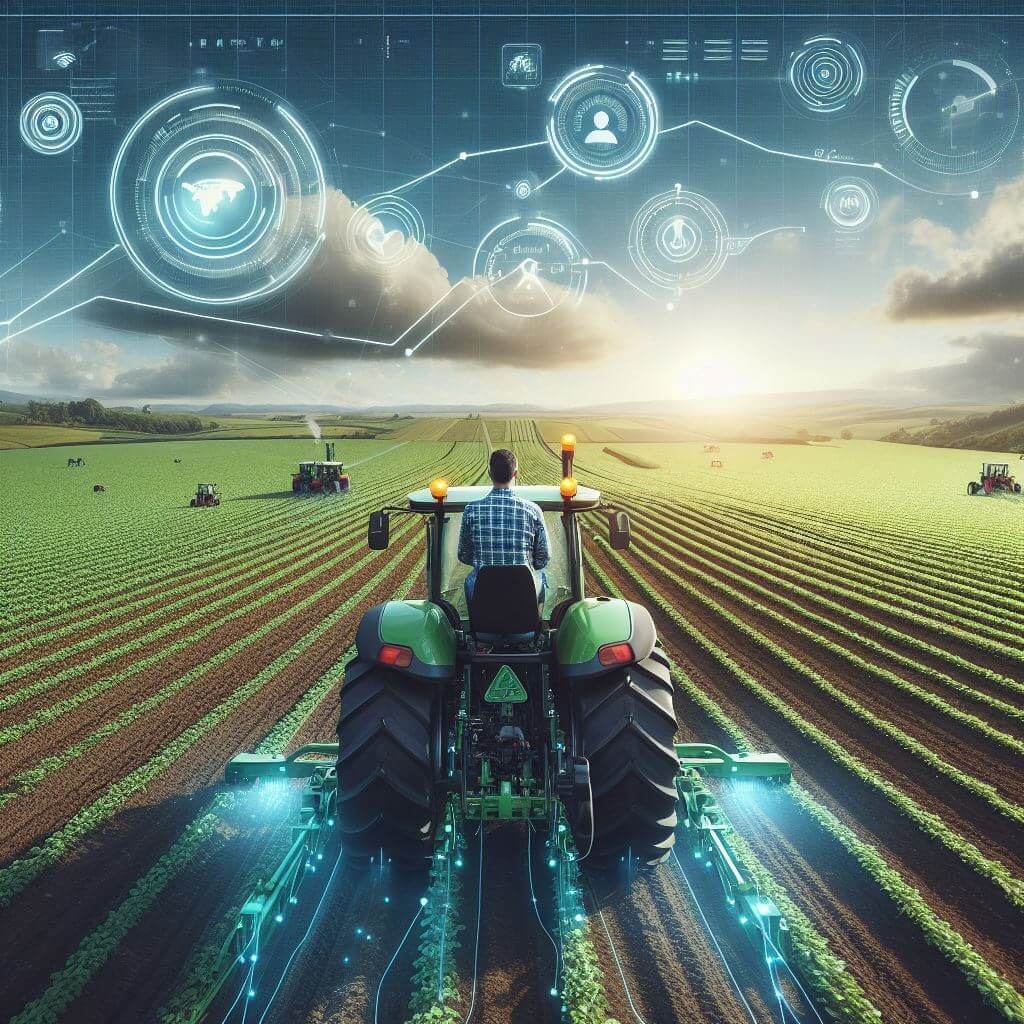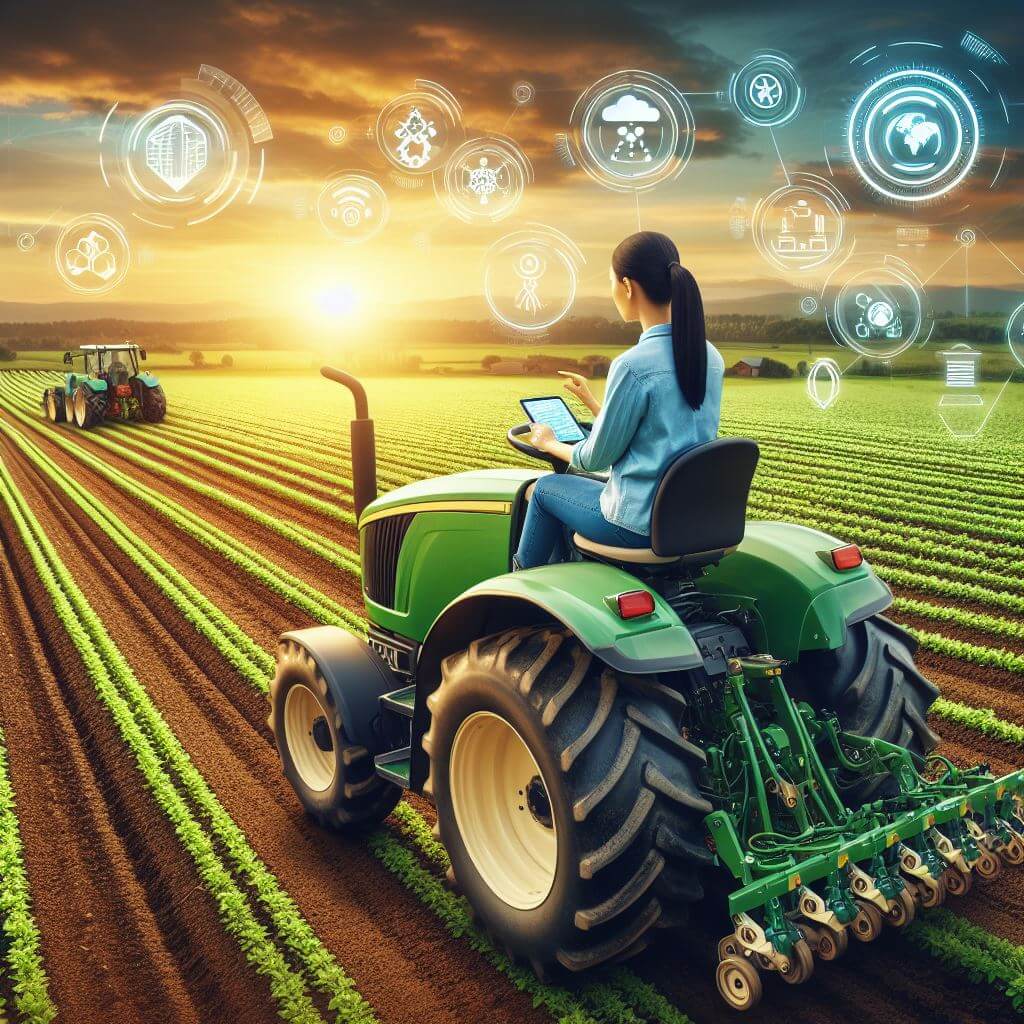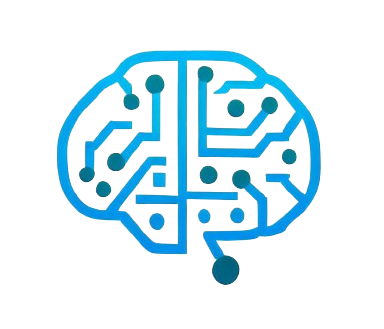Precision farming focuses on data-driven decision-making and targeted interventions, ushering in an era of increased efficiency and sustainability. By incorporating technologies like GPS, sensors, drones, and sophisticated machine learning algorithms, farmers can overcome the limitations of conventional farming.
In precision farming, each square meter of a field requires a customized approach to cultivation. GPS technology enables precise field mapping, creating a detailed spatial layout that serves as the foundation for precision farming interventions. Sensors embedded in the soil and on agricultural machinery collect real-time data on soil composition, moisture levels, and nutrient content, providing a comprehensive overview of the field’s health.
 Drones, equipped with high-resolution cameras and sensors, capture valuable information about crop health, pest presence, and overall field conditions. These aerial observations complement ground-level data, offering a holistic perspective crucial for informed decision-making. The data collected from these sources serve as raw material for machine learning algorithms, turning vast datasets into practical insights.
Drones, equipped with high-resolution cameras and sensors, capture valuable information about crop health, pest presence, and overall field conditions. These aerial observations complement ground-level data, offering a holistic perspective crucial for informed decision-making. The data collected from these sources serve as raw material for machine learning algorithms, turning vast datasets into practical insights.
The essence of precision farming lies in its ability to leverage machine learning to make sense of this information. These algorithms analyze diverse datasets, identifying patterns, correlations, and anomalies that would be challenging for a human to discern manually. Through supervised, unsupervised, and reinforcement learning algorithms, precision farming models gain a deep understanding of complex relationships between variables, enabling farmers to make decisions with a precision and foresight previously unimaginable.
Machine Learning Algorithms in Precision Farming
Supervised learning algorithms, like Support Vector Machines (SVM) and Random Forests, are foundational in precision farming applications. In agriculture, these algorithms classify tasks, aiding in identifying crop types and detecting potential disease outbreaks. Learning from labeled historical data, supervised algorithms become skilled at recognizing patterns and making predictions, enabling farmers to actively safeguard their crops.
Unsupervised learning algorithms, such as k-means clustering, play a crucial role in uncovering hidden patterns within extensive datasets. In precision farming, these algorithms categorize data points into distinct groups, facilitating trend and anomaly identification. For example, k-means clustering segments a field based on soil characteristics or crop health, allowing farmers to tailor interventions to specific zones with unique needs.
Reinforcement learning, an emerging paradigm in precision farming, introduces autonomy into agricultural machinery and decision-making processes. This learning approach enables machines to learn by interacting with their environment, adjusting actions based on feedback. In agriculture, reinforcement learning holds promise for tasks like autonomous machinery navigation, robotic harvesting, and adaptive resource management.
The dynamic nature of precision farming necessitates adaptive algorithms processing real-time data streams. Online machine learning algorithms, including stochastic gradient descent and online random forests, excel where data is continuously generated and evolving. These algorithms enable precision farming systems to adapt swiftly to changing conditions, providing farmers with up-to-the-minute insights for timely decision-making.
Crop Yield Prediction Models and Advanced Algorithms
Crop yield prediction models are important in blending agriculture with sophisticated algorithms, giving farmers valuable insights into future harvests. Fueled by advanced machine learning algorithms, these models have become essential tools in modern agriculture.
Regression algorithms form the base of many crop yield prediction models, offering a statistical framework for estimating crop yields based on various variables. Linear regression, for example, is skilled at establishing relationships between factors like weather conditions, soil quality, and historical yield data. Decision trees, another commonly used algorithm, facilitate a step-by-step decision-making process, mapping out the interplay of variables influencing crop yields.
Deep learning algorithms, particularly neural networks, have emerged as powerful tools for refining the precision and complexity of crop yield predictions. The hierarchical structure of neural networks allows them to identify intricate patterns in vast datasets, capturing nonlinear relationships overlooked by traditional algorithms. These advanced algorithms process multiple factors simultaneously, offering a comprehensive understanding of the myriad variables influencing crop yields. Neural networks are particularly effective in scenarios where the relationships between variables are complex and nonlinear, contributing to more accurate and nuanced predictions.
Ensemble methods, like Random Forests and Gradient Boosting, are gaining popularity in crop yield prediction models due to their ability to aggregate predictions from multiple algorithms. These methods combine strengths from different algorithms, mitigating individual weaknesses and enhancing overall accuracy. By merging outputs from diverse models, ensemble methods provide a robust and resilient approach to crop yield prediction, improving forecast reliability even in uncertain situations.
Temporal considerations are crucial in crop yield prediction, and time series forecasting algorithms address this aspect. Models such as Autoregressive Integrated Moving Average (ARIMA) and Long Short-Term Memory (LSTM) networks capture trends and patterns in time-varying data. This temporal awareness is essential for predicting crop yields accurately, considering the seasonal variations and cyclical patterns in agricultural systems.
 The integration of satellite imagery and remote sensing data further enhances the capabilities of crop yield prediction models. These advanced algorithms leverage spatial information to monitor crop health, detect anomalies, and assess the impact of environmental factors on yields. The combination of spatial and temporal data empowers farmers with a comprehensive understanding of their fields, enabling data-driven decisions regarding planting, irrigation, and harvesting schedules.
The integration of satellite imagery and remote sensing data further enhances the capabilities of crop yield prediction models. These advanced algorithms leverage spatial information to monitor crop health, detect anomalies, and assess the impact of environmental factors on yields. The combination of spatial and temporal data empowers farmers with a comprehensive understanding of their fields, enabling data-driven decisions regarding planting, irrigation, and harvesting schedules.
Practical Applications and Success Stories
One notable application is in remote sensing technologies, where machine learning algorithms analyze satellite and drone imagery to monitor crop health and detect anomalies. These applications provide farmers with unprecedented insight, enabling them to identify early signs of stress, diseases, or nutrient deficiencies. Timely detection empowers farmers to take proactive measures, such as targeted irrigation, precision nutrient application, or pest control interventions, preserving crop health and minimizing yield losses.
Weed detection is another compelling application, demonstrating how machine learning algorithms contribute to sustainable farming practices. Using computer vision and pattern recognition, these algorithms differentiate between crops and weeds, allowing automated weeding systems to selectively target and remove unwanted plants. This reduces dependence on herbicides and promotes environmentally friendly weed management strategies.
In automated harvesting, machine learning has led to transformative advancements. Harvesting robots equipped with computer vision systems and machine learning algorithms can identify ripe fruits, assess their quality, and execute precise harvesting maneuvers. This addresses labor shortages and enhances the efficiency of harvesting operations, minimizing waste and ensuring optimal produce quality.
Predictive maintenance, facilitated by machine learning algorithms, has become a game-changer in agricultural machinery management. Analyzing data from sensors embedded in tractors and other equipment, these algorithms predict potential malfunctions or breakdowns before they occur. This foresight enables farmers to schedule maintenance activities proactively, reducing downtime and preventing costly repairs.
Success stories in precision agriculture abound, with farmers reporting increased yields, resource savings, and enhanced sustainability. For instance, a vineyard in California implemented machine learning algorithms to optimize irrigation schedules based on weather patterns, soil moisture levels, and plant water needs. This resulted in a significant reduction in water usage while maintaining or improving grape quality and yield.
In the Midwest, a large-scale corn farm integrated machine learning-based crop yield prediction models into their decision-making processes. Considering factors such as soil health, historical yield data, and weather patterns, the farm achieved a remarkable improvement in yield predictions. This allowed farmers to optimize planting and harvesting schedules, leading to increased overall productivity.
